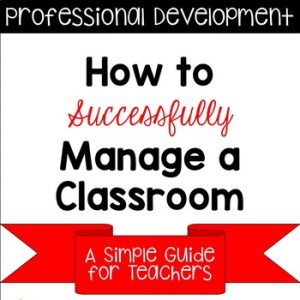Classroom Management: How to Plan & Prepare a System
How to Prepare a Classroom Management System
First, you need to decide what type of classroom environment you want to create. If you could label a “vibe,” what would you call it? This will help guide you to developing a system that will ensure that vibe becomes a reality.
Second, the foundation of every classroom management system is structure. This structure is created by having rules and procedures. Be sure to keep your rules clear, simple and limited to only the most important. A laundry list of rules will be hard for students to remember and for teachers to uphold. (Examples could include: keep hands to yourself or show up daily ready to learn with your mind and materials.) Procedures should also be clear, simple, and created only for the most common classroom tasks and routines. (Examples could include: sharpening pencils, using the restroom, or checking out a book in the classroom library.)
Thirdly, classroom management is strengthened when teachers plan their lessons with that structure in mind. They write specifically what students will do and how they will do it. By planning lessons with this in mind, teachers can prevent misbehaviors. When you can envision how your classroom will operate, it is much easier to create a system to make sure that happens.
How to Implement a Classroom Management System
Once you have thoroughly planned your classroom management system, it is time to roll it out! Introduce students to your expectations by explaining the purpose behind having structure in the classroom. You need students to be invested in the rules and procedures so that they will not only follow it themselves, but they will hold each other accountable too.
Students are visual learners and will want to see what these things looks like in action. Modeling rules and procedures will ensure students are on the same page with what you expect of them because you explicitly showed them what and how to do it.
It’s important that students get active in the learning process too. Have them stand up and practice those common routines or act out rule followers vs. rule breakers. Not only is this highly engaging but it helps students process the information.
It is important to remember that you have to continue reminding students of your classroom management plan, especially after a long break from school. Rewind and refresh rules and procedures often. You don’t have to spend as much time as you did initially, but you do have to dedicate time to review.
Lastly, the greatest way to ensure students continue adhering to the classroom management structure is to shout out students adhering to rules and procedures. Students want to be caught doing great things and this is the perfect way to do that.
- Student Behavior Contracts
- Classroom Coupons- Praise & Rewards
- Student Behavior Reflection
- Behavior Management Color System Visual
- “I Promise” Student Behavior & Academic Contract
Or click on the image above to grab the classroom management guide!




 Get Edu-Tips, Freebies and grab your FREE Study Guide for Gretchen’s New Book!
Get Edu-Tips, Freebies and grab your FREE Study Guide for Gretchen’s New Book!